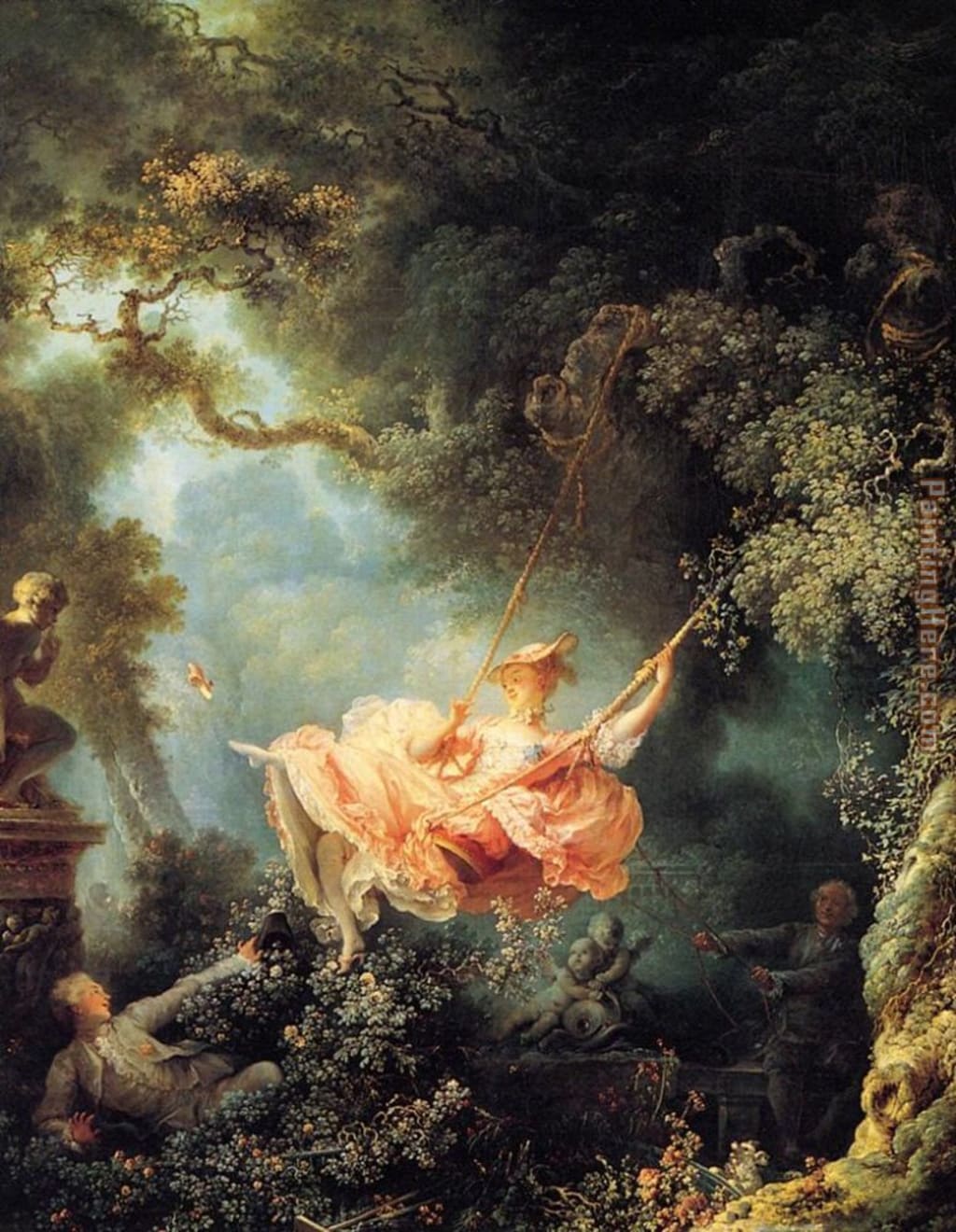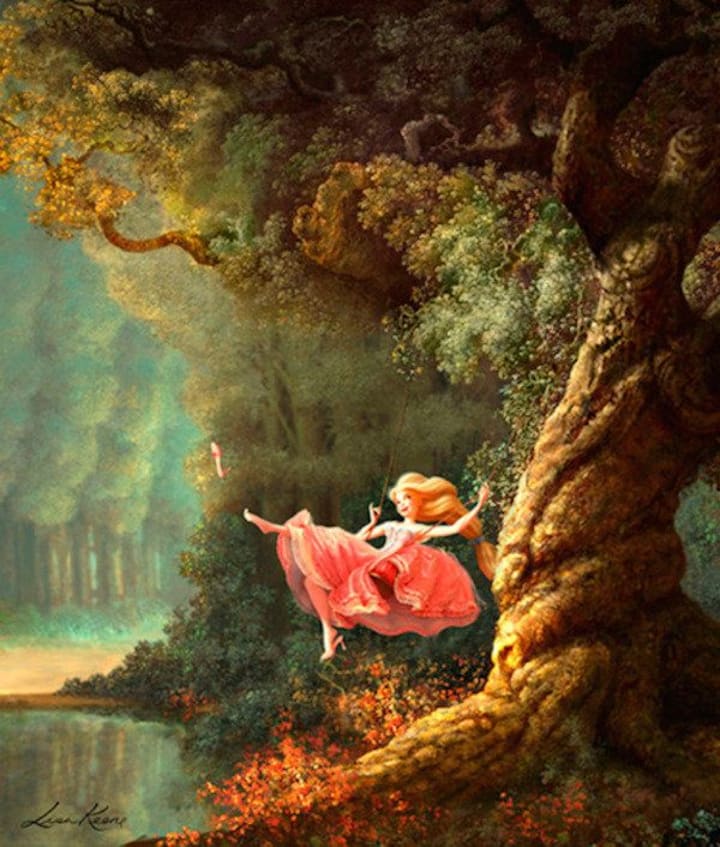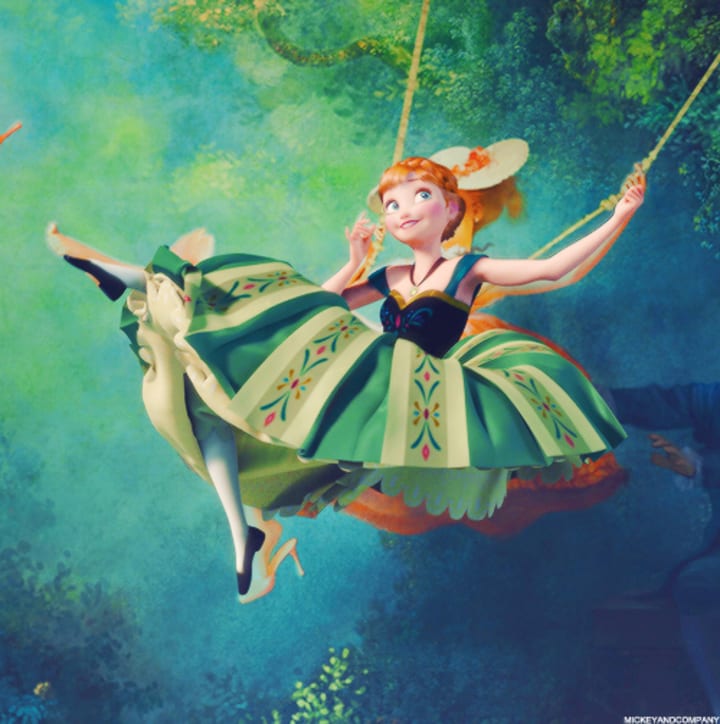Disney + 'The Swing'
Exploring Disney's fascination with the 18th-Century Rococo oil painting

It's no question that Disney draws inspiration from works of art—ranging from the beginning of time, until now—but one piece in particular has been referenced in a few of Disney's recent popular films, and a controversial piece at that.
The piece known as The Swing, or The Happy Accidents of the Swing, depicts a young woman sitting upon a swing, seemingly intentionally kicking off her shoe as a young man is seen below, watching her from a "vantage point" which allows him to see up her skirt. An older gentleman, unaware of the younger man, is tucked away behind her—using ropes to propel her on the swing.
The history behind this painting's commission is an interesting one. With conflicting origins as to who exactly commissioned the painting, It is believed that either Baron de Saint-Julien, or some say dramatist Charles Collé, had originally asked French painter Gabriel François Doyen to paint this of him and his mistress—Doyen refused, due to the "frivolous" nature of the painting, and subsequently passed the commission onto Jean-Honoré Fragonard.
Since The Swing's controversial beginnings—interpreters of the paintings believe that the painting represents infidelity, rebellion, or a female's first sexual experience. So what exactly is Disney's role in this?

The Swing is first referenced in concept art by Lisa Keene for the computer-animated film Tangled. Depicted is our heroine, Rapunzel, kicking off her shoe upon the similar swing, but with no man depicted below or behind her. Rapunzel itself is a story of firsts—a dark and "Grimm" one at that—but in true Disney fashion, a happier twist is needed to make the movie appropriate for children. Rapunzel, a young girl never having seen the outside world, has to discover the world for herself. This concept art takes place after she has left her tower, swinging ever-so "frivolously" beneath a tree. In the film, she childishly plays in the grass, in the water, around trees, as we see her truly experiencing nature for the very first time, all while our favorite smoldering thief, Flynn Rider, tags along begrudgingly.
This itself makes sense for why The Swing is an important piece of art—the embodiment of rebellion, especially for its time. Rapunzel herself doesn't believe she is being rebellious, at least not on purpose—she is out to explore her roots, why the glowing lanterns happen on her birthday, as she believes it is her true right to know and discover things on her own—without the limitations of Mother Gothel.
Allusions to the original and concept art do happen in the film, as we see Rapunzel swinging from her own hair around a tree, similar to the ropes depicted in oil painting. However, she is unassisted, showing that her discovery and new found freedom is hers, and hers alone. Perhaps this is a feminist twist on the old painting, showing that our heroine is not just a being in need of another human for validation, but that she can—and will—save herself.

Next up, we see a Disney-drawn version of The Swing in the halls of Anna and Elsa's castle. The painting is depicted quite large as it hangs upon the castle walls, while in reality, the art is actually only about 32 x 25 inches.
Anna and Elsa both live sheltered lives due to Elsa's untamed magic, which is neither of their own faults, and is more so due to the lack of knowledge surrounding Elsa's mystical powers. Anna, the ever-curious and more reckless sister, has dreamed of a life outside of castle walls, while Elsa has always kept to herself, done what is told of her, and self-limits due to her inability to control what she believes is a curse.
The moment it becomes time for Elsa to become queen, Anna finally gets the chance to meet someone outside of her own home. The excitement and amazement surrounding what Anna believes will be a glorious event of her sister's coronation, is shown in her pre-party jitters and anticipation. She enters the hall of famous paintings they own, and for a brief moment, we see Anna jump in front of several of these beautiful works of art—The Swing being one of them.
As a true representation of Anna's firsts, and her deep naivety, the 18th Century painting is shown Disney-fied, cropped, but still showing a man behind the woman swinging—representing Anna's hope to find someone, (and perhaps anyone) to make her feel not-so alone.
The man who lays beneath the skirt of our original young woman on the swing is not seen—maybe for Disney's censorship, or maybe to not give away the fact that the man Anna originally seeks is not the one who will be her companion in the end, circling back to the unexpected, frivolous, rebellious disobedience of the original young woman.
In a time of the movement for more gynocentric narratives in film, TV, books, and art—maybe The Swing has taken a front seat to show that maybe female liberation in every aspect ain't all that bad, and is maybe a little more important than previously thought—and Disney is here to show it.






Comments
There are no comments for this story
Be the first to respond and start the conversation.